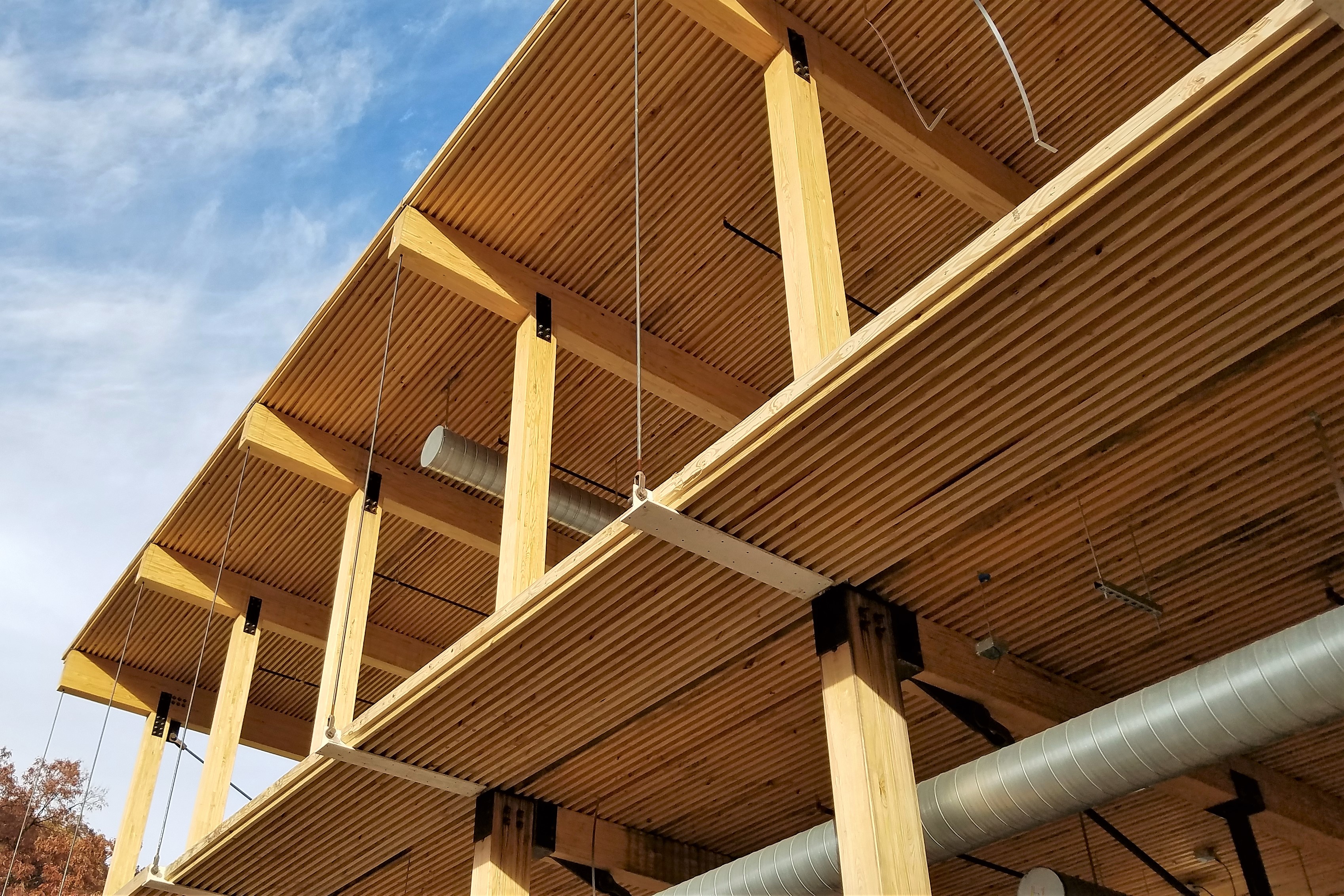Petal: Materials
Imperative 11: Embodied Carbon Footprint
Minimizing Carbon Impact
The Living Building Challenge requires projects to offset embodied carbon from construction, but the goal is to minimize this carbon pollution in the first place.
Climate discussions can be politically charged, but The Kendeda Building offers a constructive way to focus on shared goals. It uses mass timber, which is significantly lower in embodied carbon than steel or concrete, to showcase both climate benefits and economic opportunities, particularly for local wood industries.
Georgia has 22 million acres of private, commercially available timberland—more than any other state. Although some mass timber was sourced from elsewhere in the Southeast, the project underscores the potential for expanding Georgia's capacity to supply timber for commercial construction.
By using mass timber, the building reduces reliance on carbon-intensive materials like concrete. Cement, a key ingredient in concrete, accounts for ~8% of global CO₂ emissions. To reduce this impact, The Kendeda Building used low-carbon concrete technology from local provider Thomas Concrete. Learn more here.
The building also incorporates salvaged materials to further cut carbon pollution.


